
Bruker supplies a wide range of FTIR research spectrometers.
INVENIO
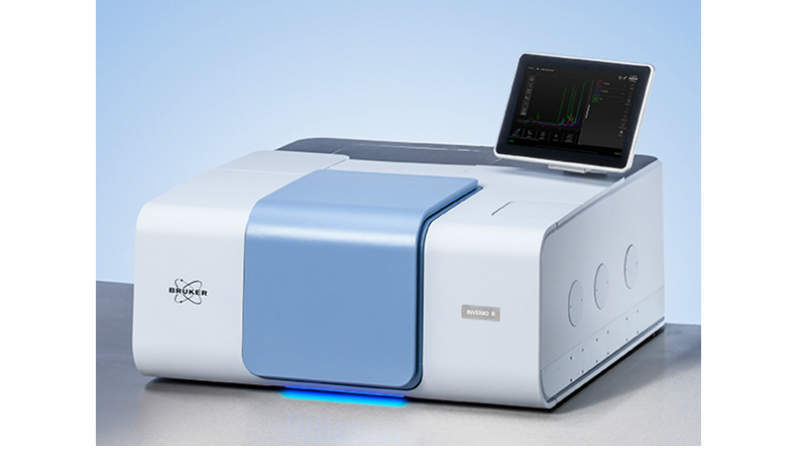
INVENIO represents the entry level of Bruker’s research and development (R&D) Fourier-transform infrared (FTIR) spectrometers for demanding analytical and R&D applications.
The innovative technology and smart design set standards for the next generation of FTIR spectrometers. The novel optical beam path provides excellent signal-to-noise ratio and a broad spectral range covering far infrared (FIR) to ultraviolet (UV) and visible light (VIS). It also has high flexibility for sophisticated experimental set-ups.
VERTEX series
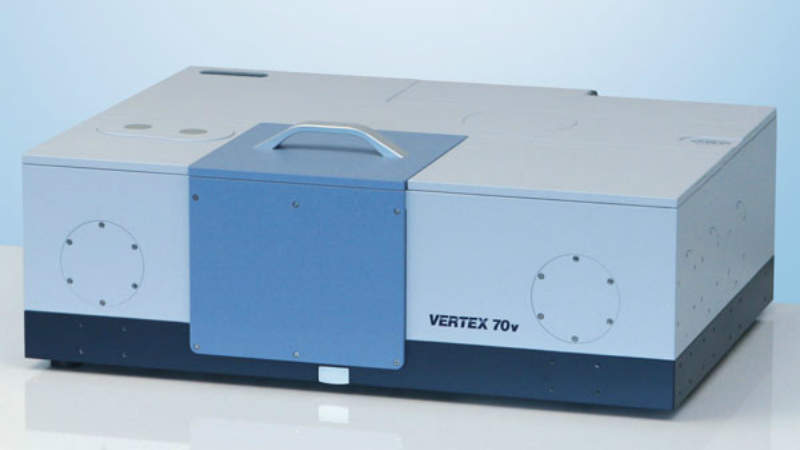
The VERTEX FTIR spectrometer series is extremely flexible and is built on a fully upgradeable optics platform.
The VERTEX 80 is prepared for demanding research applications. It uses the UltraScan interferometer, which offers high-resolution, rapid and slow scanning, and high-performance over a very wide spectral range.
The vacuum versions of the VERTEX Series (the VERTEX 70v and VERTEX 80v) provide the ultimate rejection of interference from the laboratory environment.
FTIR vacuum spectrometer
The major advantage of using FTIR spectroscopy in a vacuum is to avoid the absorption of atmospheric moisture and other gases.
Vacuum spectrometers provide high-stability and allow a reproducibility in comparison to dry air or nitrogen-purged spectrometers.
Key features include:
Research FTIR vacuum spectrometer with automatic beamsplitter changer
Bruker Optics complements its VERTEX 80v FTIR vacuum spectrometer with the unique beamsplitter exchange unit BMS-c and allows the remotely controlled automatic exchange of up to four different types of beamsplitters under vacuum conditions.
The beamsplitter exchange unit (BMS-c) provides significant benefits:
Research FTIR vacuum spectrometer with automatic beamsplitter changer
Bruker Optics complements its VERTEX 80v FTIR vacuum spectrometer with the unique beamsplitter exchange unit BMS-c and allows the remotely controlled automatic exchange of up to four different types of beamsplitters under vacuum conditions.
The beamsplitter exchange unit (BMS-c) provides significant benefits:
IFS 125HR
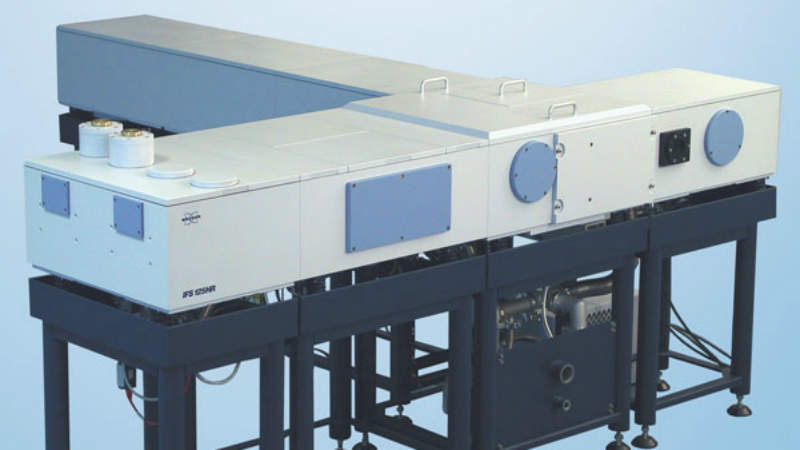
The IFS 125HR is an instrument for ultra-high resolution spectroscopy.
In absorption or emission mode, the IFS 125HR can resolve highly complex spectra into discrete lines for recognition and spectral assignment. Combined with the wide spectral range coverage from THz to UV the IFS125HR allows recording of any gas phase reference database that the scientist may need.
Every experiment can access up to four different sources and six detectors without breaking the vacuum. All optical devices are usable through each of the two sample compartment channels.
Cube corner interferometer with hybrid scanner construction provides enhanced system stability for the available spectral resolution and guarantees with double-sided interferogram data acquisition (option) symmetric line shapes.
Application examples include:
CONFOCHECK
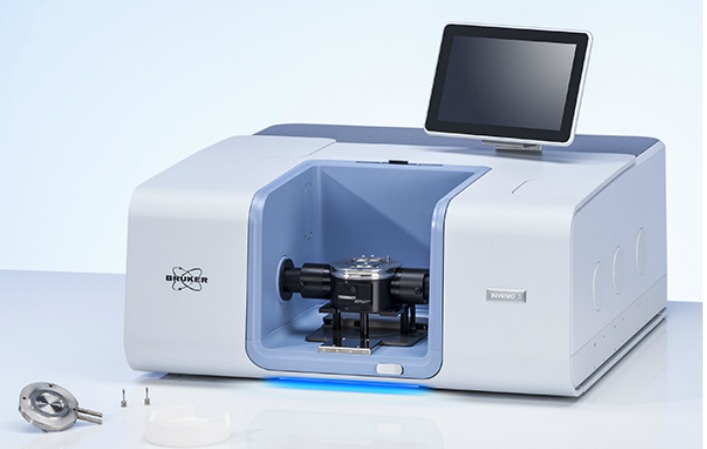
The CONFOCHECK is a dedicated FTIR system for the investigation of proteins in water.
Its specific configuration facilitates a fast data acquisition (capacity of 30 seconds per sample) with a high sample throughput controlled by a user-friendly software interface.
CONFOCHECK is equipped with several specific protein sampling cuvettes that allow the measurement of solved and membrane-bound proteins, even at very low amounts (10 µg).
To reach optimal temperature constancy and to facilitate the measurement of temperature induced protein conformational changes, the sample cuvettes are temperature-controlled by a thermostat.
FTIR protein applications:
Click here for full details.
TGA-FTIR
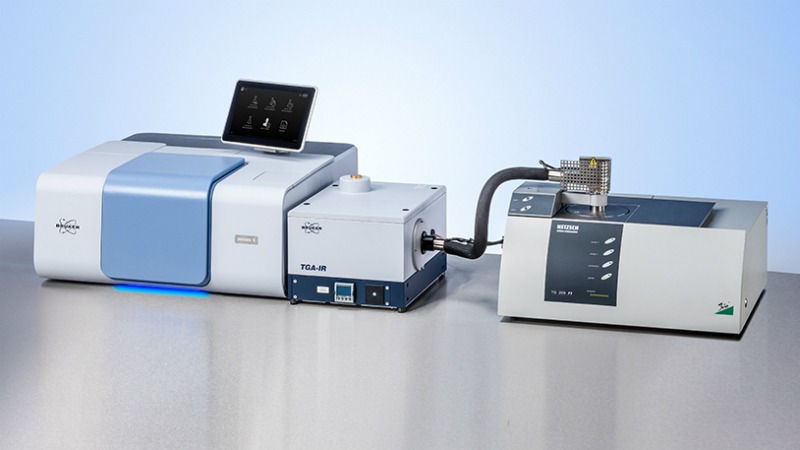
Thermogravimetric analysis (TGA) follows changes of a sample, in terms of its mass, function, temperature and time.
TGA provides characteristic information about the composition of the measured sample, with particular attention paid towards the amounts of the various components and their thermal behaviour. What’s more, further measurements are viable, such as kinetic analysis of thermal decomposition.
The identification of gases released directly from the sample or during thermal treatment can be performed through a combination of thermal analysis alongside a spectroscopic method, such as FTIR spectroscopy.
IR spectroscopy is a classical technique, which relies upon the interaction of infrared radiation with the vibrating dipole moments of molecules. With the exception of homonuclear diatomics and noble gases, IR spectroscopy provides a characteristic spectrum for each substance.
This combination creates a powerful analytical technique that blends the quantitative capabilities of TGA with the qualitative capabilities of FTIR spectroscopy.
TGA-FTIR is useful for a wide range of applications, including:
CryoSAS
![]()
CryoSAS is an automated high-sensitivity FTIR system for the quality control of solar and electronic grade Silicon according to international ASTM/SEMI standards.
Although sample cooling to very low temperatures is required, CryoSAS operates without cryogenic liquids, is easy-to-use and optimized for the requirements of industry customers.
CryoSAS combines Bruker’s high-performance FTIR spectrometers with a built-in, closed-cycle cryo-cooling technique that does not require any liquid helium. All CryoSAS components are state-of-the-art, yet utilise proven technologies to accomplish a difficult analysis in the demanding silicon production environment. CryoSAS can be operated at high levels of automation including accurate reporting of the analysis results.
SiBrickScan
![]()
SiBrickScan (SBS) is a dedicated at-line system for the FTIR quantification of interstitial oxygen in complete silicon ingots, resulting in a precise concentration profile along the longitudinal axis.
Accessing this information without sawing wafers or preparation of test samples is a major and cost-effective advantage, qualifying individual ingots before sawing and optimising the Si crystallisation process.
Unique SBS features:
PMA 50 module
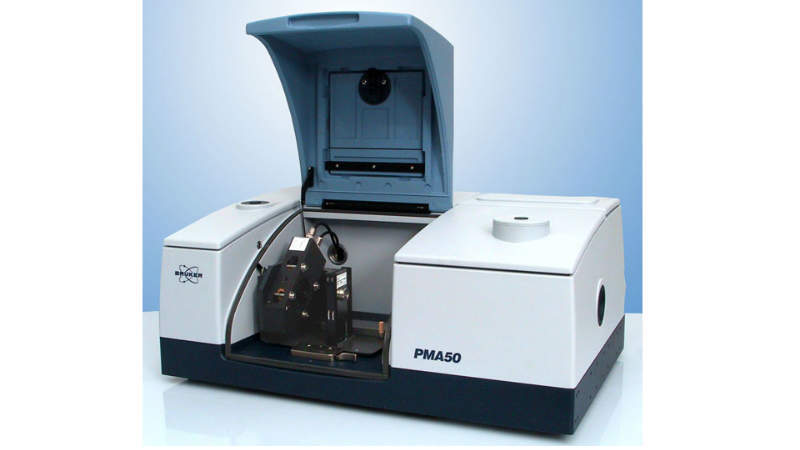
The PMA 50 module has been dedicated developed for polarisation modulation (PM) measurements.
Both linear dichroitic measurement techniques such as PM infrared reflection adsorption spectroscopy (PM-IRRAS) and circular dichroitic experiments such as vibrational circular dichroism (VCD) spectroscopy can be realised using this accessory.
It can also be adapted to Bruker TENSOR and VERTEX FTIR spectrometers.
PMA 50 features include: